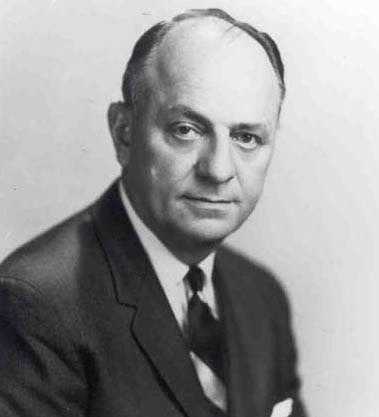Did you know, on this date, the Surgeon General links smoking to cancer

- Oops!Something went wrong.Please try again later.
(WHTM) By the 1920s doctors in the United States and across the world realized that deaths due to lung cancer, which was virtually unknown in the 1800s, were skyrocketing. But why?
Epidemiologists studied possible causes, including industrial pollution, street paving materials (asphalt was a prime suspect), and chemicals used in World War I. Also suspected, the increase in the use of tobacco, particularly cigarettes.
Get daily news, weather, breaking news, and alerts straight to your inbox! Sign up for the abc27 newsletters here
Then in 1929, in Dresden, Germany, Dr. Fritz Lickint published a study showing massive statistical evidence of a link between lung cancer and tobacco use. (Lickint was also concerned with secondhand smoke, and coined the term “passivrauchen,” – passive smoking.)
Other studies followed, showing a correlation between cancer and smoking. Meanwhile, smoking in the United States continued to increase. By 1950, lung cancer was the most common cancer diagnosis in American men.
Millions more adults should be screened for lung cancer under new American Cancer Society guidelines
But people kept lighting up. Smoking was seen as glamorous and sophisticated. Cigarette use by Americans 15 years and older went from 747 cigarettes per year in 1920, to 1828 cigarettes per year by 1940, to 3908 cigarettes per year by 1960. It peaked in 1963 at 4345 cigarettes per year.
Then on January 11, 1964, the Surgeon General of the United States released his report on the connection between smoking and cancer, and everything changed.
Pennsylvania bill would ban smoking in casinos, bars
The Surgeon General’s Report on Smoking and Health (which for many people to this day is THE Surgeon General’s report) got its start in June of 1961, when the American Cancer Society, the American Public Health Association, the American Heart Association, and the National Tuberculosis Association sent a letter to President Kennedy calling for a Presidential Commission to study “the tobacco problem.”

The committee that was formed by Surgeon General Luther Terry met for nearly 18 months. They didn’t commission any new studies on the issue; instead, they reviewed studies already published.
More than 7,000 of them.
The report the committee crafted runs 386 pages, of which 343 are devoted to the analysis of evidence relating smoking to health. This included not only lung cancer, but respiratory and cardiovascular diseases.
This is where the committee made the first of two brilliant public relations moves. Knowing full well that most people would have neither the time nor inclination to plow through pages of data, they presented their conclusions right at the beginning of the report, in four chapters running 32 pages: Introduction, Conduct of the Study, Criteria for Judgement, and most important of all, Summaries and Conclusions. Their most important conclusion – smoking is a factor in many cancers, particularly lung cancer.
American Lung Association gives Pennsylvania ‘D’ grade for tobacco policies
This brings us to the second brilliant public relations move. Surgeon General Terry released the report on January 11, 1964 – a Saturday. This meant the release of the report wouldn’t cause chaos in the stock market. It also meant it would be the front page story on Sunday newspapers across the country, as well as television newscasts.
The report had its intended effect. Smoking was now recognized as a public health issue. In 1965 the U.S. Congress adopted the Federal Cigarette Labeling and Advertising Act, which required a health warning on cigarette packages. In 1969 it passed the Public Health Cigarette Smoking Act, which called for sterner health warnings on cigarette packages and banned cigarette advertising on TV and Radio. In 2009 Congress passed the Family Smoking and Tobacco Control Act, which restricts marketing and sales to youth, requires warning labels on smokeless tobacco, prohibits tobacco companies from making “reduced harm” claims, and requires disclosure of ingredients in tobacco products.
Across the country, anti-smoking campaigns proliferated, as well as treatments for people who needed help to quit smoking.
In Canada, each cigarette will get a warning label: ‘poison in every puff’
So what has been the result of efforts to reduce smoking?

The National Cancer Institute reports that between 1965 and 2021, the number of adults aged 18 and older who used cigarettes dropped from around 42 percent down to around 12 percent.
Decreases in the number of new lung cancer cases lag behind the rate of decreased smoking. But the NCI data shows that from 1992 to 2020, the number of new cases per 100,000 persons dropped from 64.7 to 35.9.
All of which means the response triggered by the Surgeon General’s Report is one of the most successful public health initiatives in the nation’s history.
To view the entire Surgeon General’s Report, click here.
For the latest news, weather, sports, and streaming video, head to ABC27.

